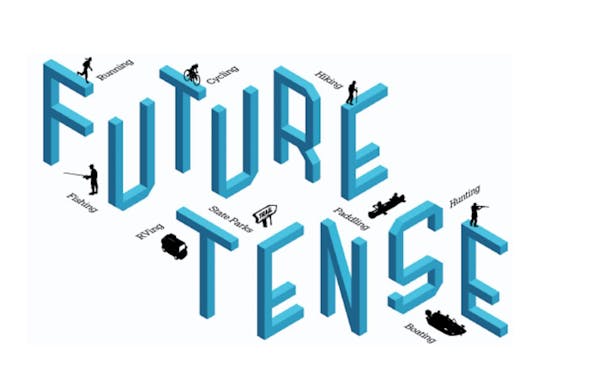In her introductory remarks to the state Department of Natural Resources (DNR) roundtable held virtually in January, the agency's commissioner, Sarah Strommen, mentioned almost as an aside that in coming months she would announce a new funding mechanism for her department and, presumably, for Minnesota conservation.
Strommen's remarks were received like thunderbolts by many of the roundtable's few hundred online attendees.
The "North American model of conservation funding," after all, hasn't been significantly altered in nearly a century, and local, state or regional supplements to it, e.g., Minnesota's 2008 Clean Water, Land and Legacy Amendment, often require a decade or more to develop and even longer to gain public support.
In preparation for Strommen's Big Reveal, whenever it happens (in the weeks since the roundtable she's declined opportunities to elaborate), let's take a gander at DNR finances, specifically the Game and Fish Fund.
Fundamentally underwritten by license sales to hunters and anglers, the Game and Fish Fund is the primary benefactor of the DNR's Fish and Wildlife Division — whose responsibility, generally, is to manage fish and wildlife and the forests, prairies and wetland habitats they require.
As Strommen implied at the roundtable, the North American model of conservation is imperiled, and largely for two reasons.
Hunting and fishing were popular pastimes among baby boomers. But baby boomers are graying and leaving these activities. And follow-on generations generally are smaller, and fewer among them hunt and fish for all the well-publicized social and demographic reasons: urbanization, cellphones, Netflix, the rise of single-parent families, an emphasis on team sports in schools, etc.
Take a look:
• Evident from the one headlined, "DNR Game and Fish Fund headed into the red?" is that, while the fund has a relatively high balance now, it is forecast to drop precipitously by fiscal 2025.
• The graphic entitled, "Game and Fish expenditures by type for fiscal year 2020," meanwhile, shows that personnel costs are highest among the fund's expenses.
• Finally, the chart titled "Receipts and transfers into Game and Fish fund by year" underscores why Strommen (and other state and federal conservation leaders) is worried about money. Hunting license revenue rose only marginally from 2015 to 2020 (when inflation-adjusted, receipts were probably close to flat).
Between 2015 and 2019, fishing-license receipts also were fairly stagnant, except that, in 2020, thanks to the pandemic, fishing-license income jumped, relatively speaking.
Finally, note that receipts in the other categories were also fairly flat over the six years except "Federal Grant Wildlife (Pittman-Robertson)," rose more than 30%. Why? Guns and ammo have been selling like hotcakes, and this is the state's portion of the federal government's excise tax on that gear and on archery equipment.
• • •
Three pertinent questions, with my comments:
• Is the DNR Fish and Wildlife Division delivering the optimum quantity and quality of land, water and fish and wildlife outcomes relative to expenses?
I don't know. But if it is, the Game and Fish Fund can't be balanced in future years by reducing expenses without diminishing the division's work. If it isn't operating optimally, greater efficiencies need to be achieved. Comment: In a future column I'll look at ways the division's efforts do (or don't) culminate in on-the-ground or in-the-lake work that benefit fish, wildlife and their habitats.
• Will the DNR succeed in its much publicized efforts to attract more women and minorities to hunting and fishing and other outdoor activities, thus boosting Game and Fish Fund income?
Broadening the ranks of conservation-minded Minnesotans is critical. But if it happens at all among nontraditional outdoor users, it won't happen fast enough to keep the Game and Fish Fund solvent. What's more, the cost of acquiring these new DNR "customers" and retaining them likely will make their recruitment a break-even effort, if that.
• Can the Game and Fish Fund's future imbalance be resolved by increasing hunting and fishing and related license and permit fees in 2025 or thereafter?
Probably yes. Every five or six years the Legislature approves such increases and likely will again. However, given the diminishing ranks of hunters and anglers, license hikes might have to be relatively greater than previously. And over time, if higher fees are continually required of ever-fewer hunters and anglers, the fees themselves might prompt disinterest in these activities.
Why is any of this important?
Reasons are many. But elementary is that Minnesota's lands and waters and fish and wildlife — the essential components of the state's quality of life — are under pressure as never before.
The state's population keeps rising. Fewer Minnesotans have connections to land and water and therefore are more likely to be indifferent to conservation. Every year, the Twin Cities sprawl closer to Rochester and closer still to St. Cloud. And the agriculture industry's promotion of chemical-reliant monocultural crops seems unrelenting.
In the other corner we have … punching far above its weight, but not far enough … an outdated conservation model.
Ideas? Send them to the e-mail address below.
Stay tuned.
Anderson: Anglers protesting tough new Mille Lacs rules are wrong

Anderson: Courts, not politicians, should rule on Red Lake, White Earth lands

Anderson: Multimillion windfall gets invasive carp deterrent moving
![A young whitetail deer searches for food as another blanket of snow coats the arrowhead. ] Minnesota -State of Wonders, Arrowhead in Winter BRIAN PETE](https://arc.stimg.co/startribunemedia/WK32UWWY6FKNWJUIYCJ6ZPT4AU.jpg?h=91&w=145&fit=crop&bg=999&crop=faces)
Anderson: In NE Minnesota, DNR staff, habitat and deer all decline


